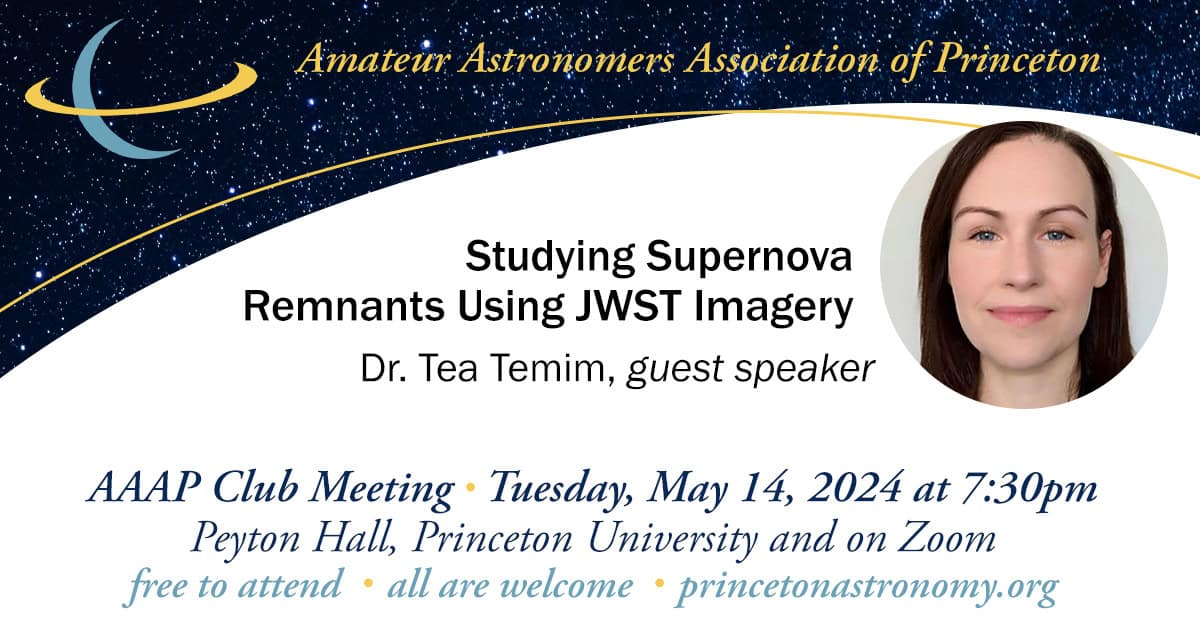
Join the Amateur Astronomers Association of Princeton on Tuesday, May 14th for our hybrid meeting featuring “Studying Supernova Remnants with JWST Imagery,” a fascinating presentation by guest speaker Dr. Tea Temim, Research Astronomer, Princeton University Department of Astrophysics.
Supernova explosions are among the most energetic events in the universe and they play a key role in shaping the energy balance, structure, and chemical content of galaxies. They are responsible for the formation and distribution of heavy elements and dust grains that enrich the environments in which they evolve. Moreover, these explosions leave behind compact objects whose high densities and magnetic field strengths represent matter under some of the most extreme conditions known, while some serve as “standard candles” with a crucial role in determining cosmic distances and the expansion history of the Universe.
Despite their great importance in astrophysics, key questions remain about what type of stars produce supernovae and how they explode. In its first year of observations, JWST has provided an unprecedented view of supernova explosions, allowing us to peer into the deepest layers of ejected material, illuminating early dust formation, and revealing remarkable, never-before-seen details in the structure of young supernova remnants. Dr. Temim will review some of these recent JWST observations and what they tell us about supernova explosions.
Dr. Temim earned her PhD from the University of Minnesota in 2009. She was subsequently a predoctoral fellow then a postdoctoral researcher at the Center for Astrophysics/Harvard and Smithsonian. She was a research scientist and postdoctoral fellow at NASA Goddard. She recently worked on JWST’s Mid-infrared Instrument (MIRI) at the Space Telescope Science Institute (STScI).
Her research focuses on understanding how supernova explosions of massive stars affect their environment and enrich the interstellar medium. She is particularly interested in the evolution of supernova remnants and pulsar winds, the connection between stellar progenitors and explosions and their observed remnants, dust production and processing by supernovae, and dust evolution in galaxies.
For more more information including the Zoom link and directions to Peyton Hall, visit
